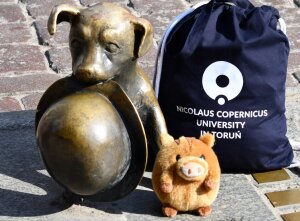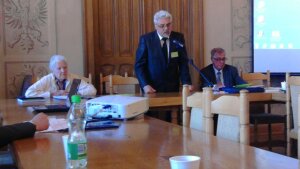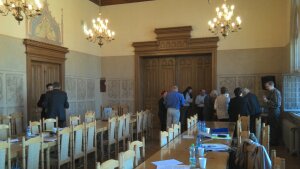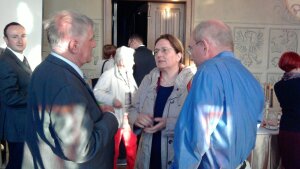
The Mascots of the University of Toruń.
Foto: Sorin PaligaTopic
From 6th to 7th May 2013, the international conference of the Commission for Balkan Linguistics was held at the Nicolaus Copernicus University in Toruń. The event was organized by the Institute of Slavic Studies of the Polish Academy of Sciences (PAN) and our Commission. The hosting university also acted as co-organizer. The meeting brought together leading scholars from Southeast and Central Europe and beyond, focusing on Balkan linguistics, language history, and areal-typological studies.
The participants of the conference
Foto: Ina ArapiAfter discussion and a lunch break, the focus shifted to Albanian language and history: Rexhep Ismajli (Prishtina) discussed the dynamics of Standard Albanian structures, Ina Arapi (Tirana) analyzed the theological and philosophical work Cuneus Prophetarum (1685) by Pjetër Bogdani, and Lindita Sejdiu-Rugova examined the status of Albanian in the Presheva Valley. Bardh Rugova discussed the position of languages in Kosovo, while Hamit, Gëzim, and Nerita Xhaferi addressed the areal boundaries of Balkan phraseology.
In the evening, the Balkan Linguistic Commission held its session, followed by a special Easter meeting, as the conference coincided with Orthodox Easter. The gathering included a presentation by an Orthodox priest and a performance of traditional Easter hymns by the local church choir, providing a memorable cultural highlight.






